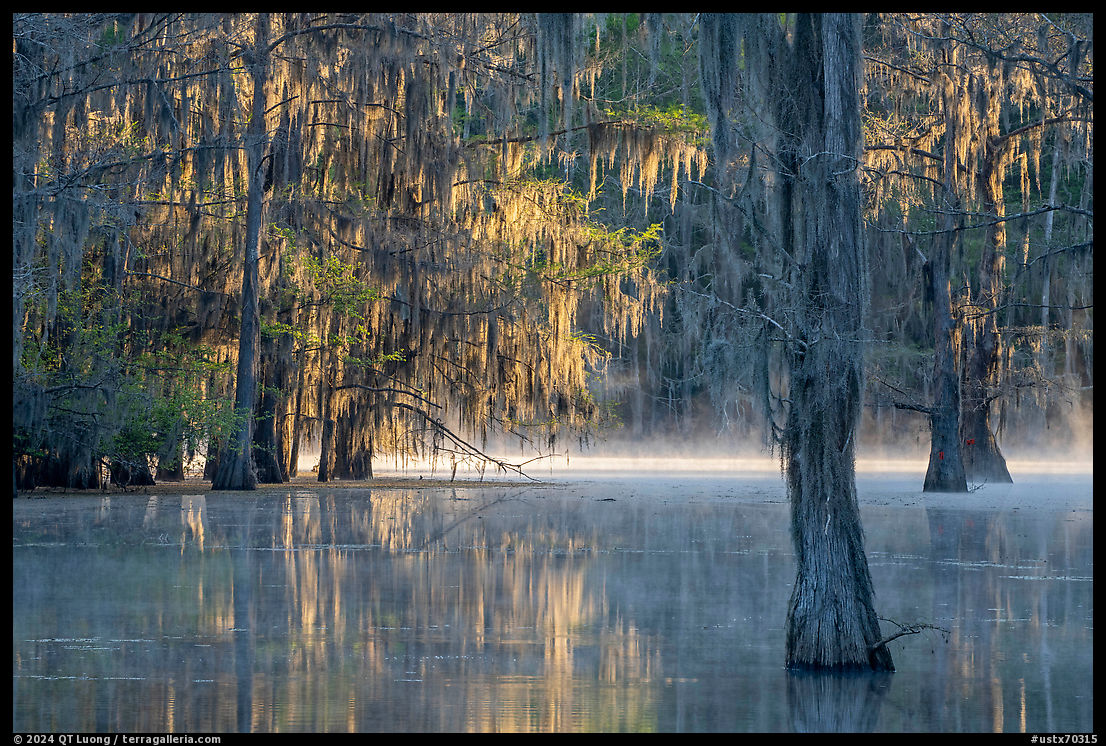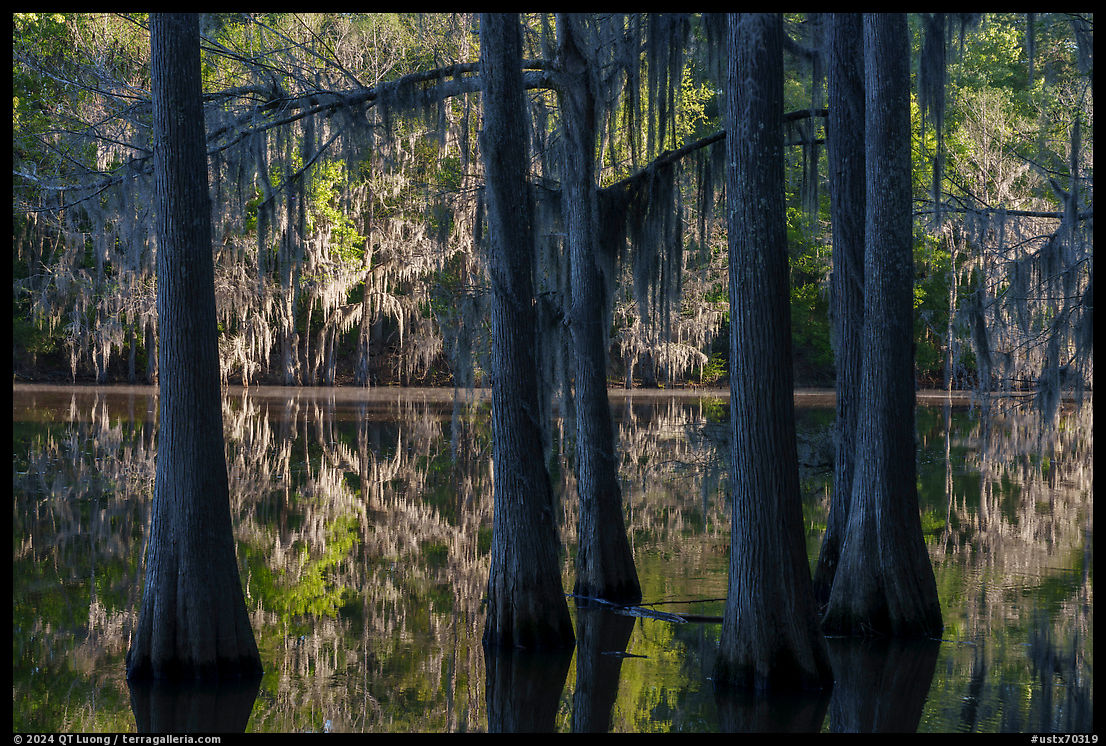Caddo Lake: A Quick Guide to the New Premier Photography Destination
No Comments
The most emblematic landscape of the American South is the flooded forests growing out of the water. One of them have recently emerged as one of the premier destinations for nature landscape photography. Two telltale signs are the number of photo workshops that frequent them, and the busloads of Chinese photographers who descend in prime season. This territory had been known for a while. I photographed in the Atchafalaya in the mid-1990s and David Muench’s Ancient America (1997), one of his most accomplished books, features quite a few images from that environment.
However, it seems that what caught the attention of the current crop of landscape photographers were the surreal russet-red fall colors which happen in the extraordinary context of interestingly shaped grey bald cypress and Spanish moss reflected in still waters and sometimes enveloped in a wisp of mystical fog. This post doesn’t feature this kind of pictures since I was there at the “wrong” time, however it includes the information I collected during my visit, which should an excellent staring point to help you start planning your own.

Although flooded forests of bald cypress can be found in all southern states from Texas to South Carolina, the one that has recently become the most popular with photographers is Caddo Lake. It is the largest natural lake in Texas (60 square miles) and also extends to Louisiana, a state with which its landscape is more often associated. Caddo Lake’s claim to fame is that it is lined up with the largest flooded forest of bald cypress trees in the world. Despite that, it is a quiet, rural, and relaxing area lined up with waterfront properties but no large-scale development. The location is about 200 miles east of Dallas, TX, and 40 miles northwest of Shreveport, LA, which is the closest airport.
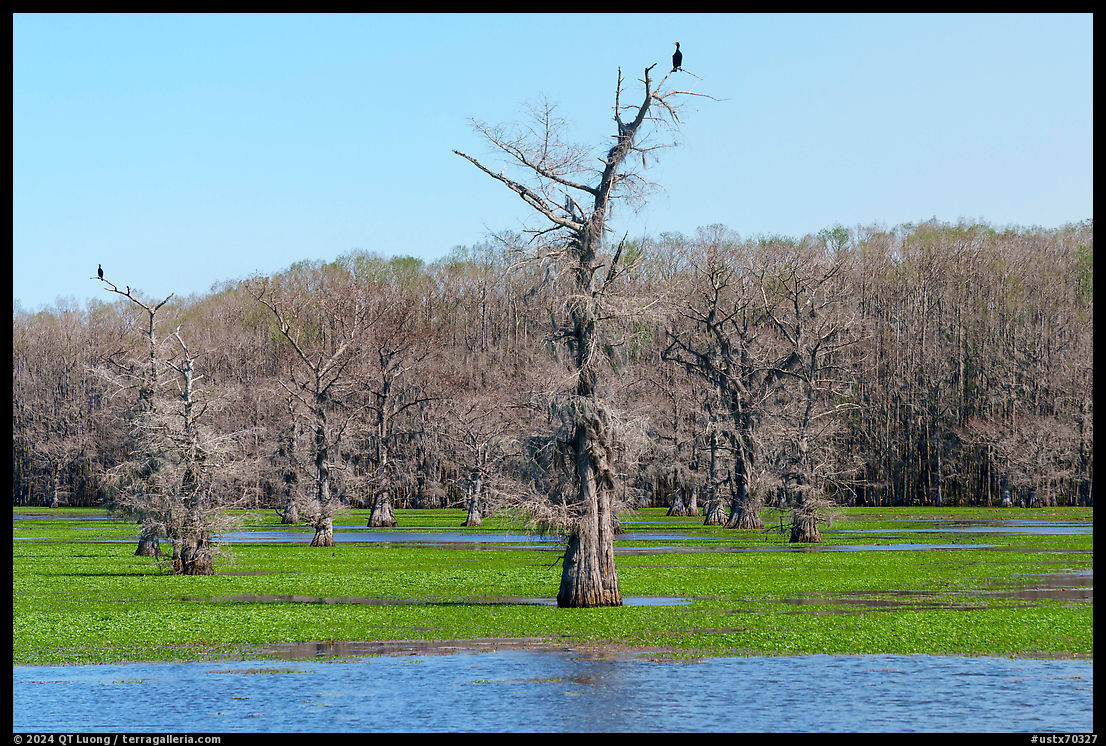
When to visit
The bald cypress is one of the few deciduous conifers, like the alpine larch, which is why it produces great colors in the fall, generally late October to mid-November. From December to March, the trees are bare, and since the Spanish moss that adorns them are grey like the trunks, well, the landscape is quite grayish. They barely started to leaf out in early April, when we were in Texas for the eclipse of April 8, so our timing was not ideal. A few more weeks later, there would have been more tender green on the branches. In late spring and summer, the trees and lush and the lake covered with blooming aquatic plants. Unless it is a cloudy day, which is always good for forest photography, you would want to be out around sunrise and sunset. Even without spectacular foliage, a cluster of bald cypress and reflections silhouetted against a colorful sky is a beautiful sight to hold.

Where to stay
The low-profile community of Uncertain, TX is located next to the lake but has just a few small eateries and convenience stores. Accommodation is limited to rental houses (Airbnd/Vrbo) by the lake, including Spatterdock Guest Houses on Taylor Island which feature whimsical art installations and a nice boardwalk. Caddo Lake State Park offers cabins (be prepared: no linens, pillows, towels, or kitchenware) and campsites. Fifteen minutes away, Jefferson, TX is and quaint and charming town with cobblestone streets, historic buildings and tourist amenities such as nice restaurants, hotels, and shops. Marshall, TX and Shreveport, LA have more amenities but are further and bland.
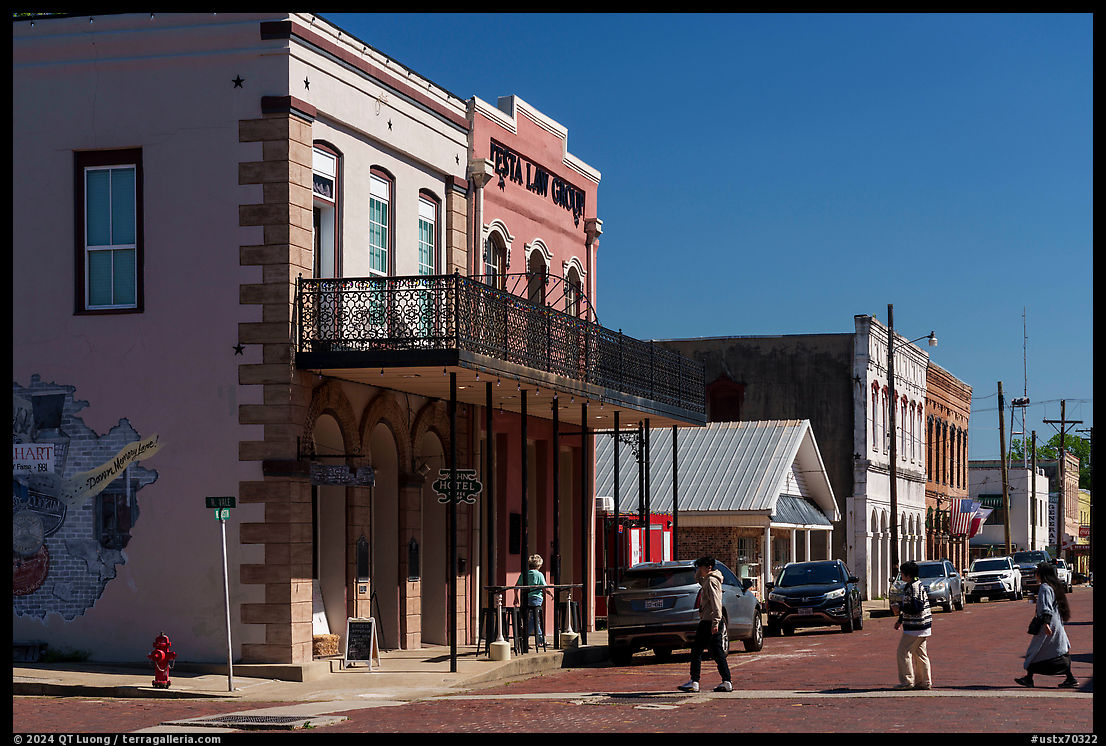


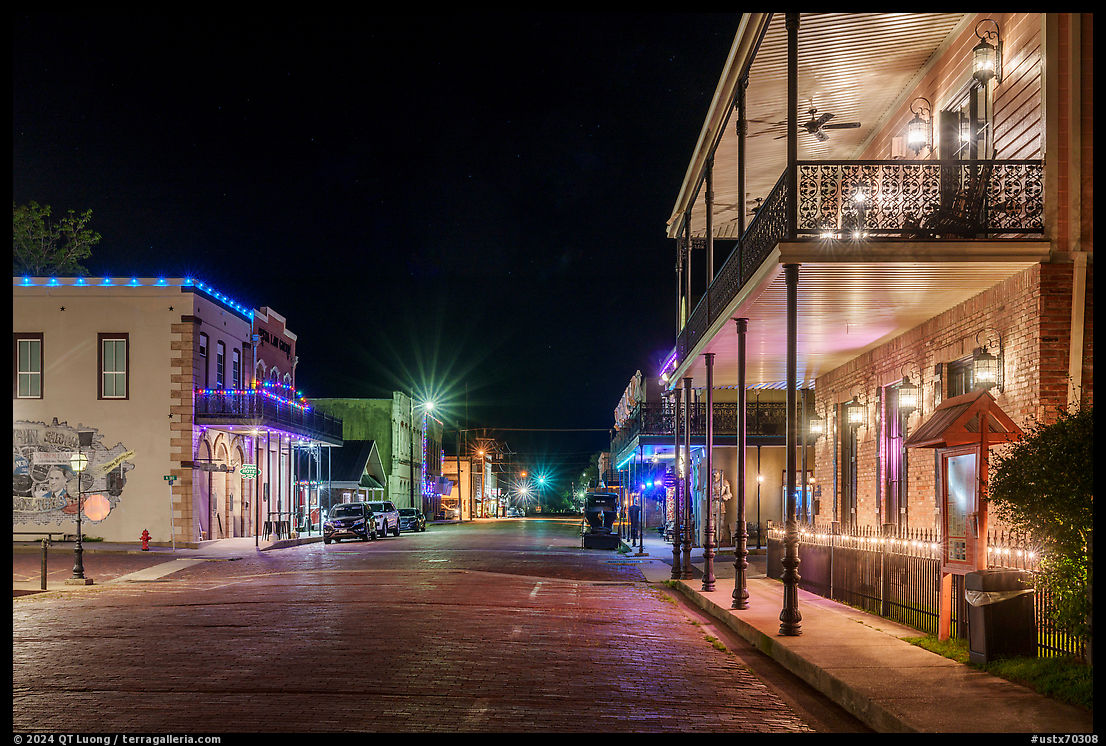
Exploring by tour boat
Most of the shore of Caddo Lake is not public land. Given the size of the lake, it is best explored by motorboat. There are at least a dozen of operators around Uncertain that can take you on the lake while narrating its history and natural features. Most boat tours start from Johnson’s Marina, but Mike from Ole Jigger launched from his own boathouse in this backyard. Guides generally use pontoon boats with room for about ten which are stable, comfortable, and spacious enough to deploy a tripod if your group is not too large. The standard tour lasts 1h30 to 2h, during which we covered a lot of ground. I was impressed how our captain so easily navigated without aid the maze-like flooded forest. The ability to easily cover large distances would be helpful in finding great fall color. Sunrise and sunset tours are commonly arranged, but since it was a family trip, we went in the mid-afternoon and I considered it to be scouting session. When making advance arrangements keep in mind that many guides are hired by photo workshops planned more than a year in advance during the prime season.


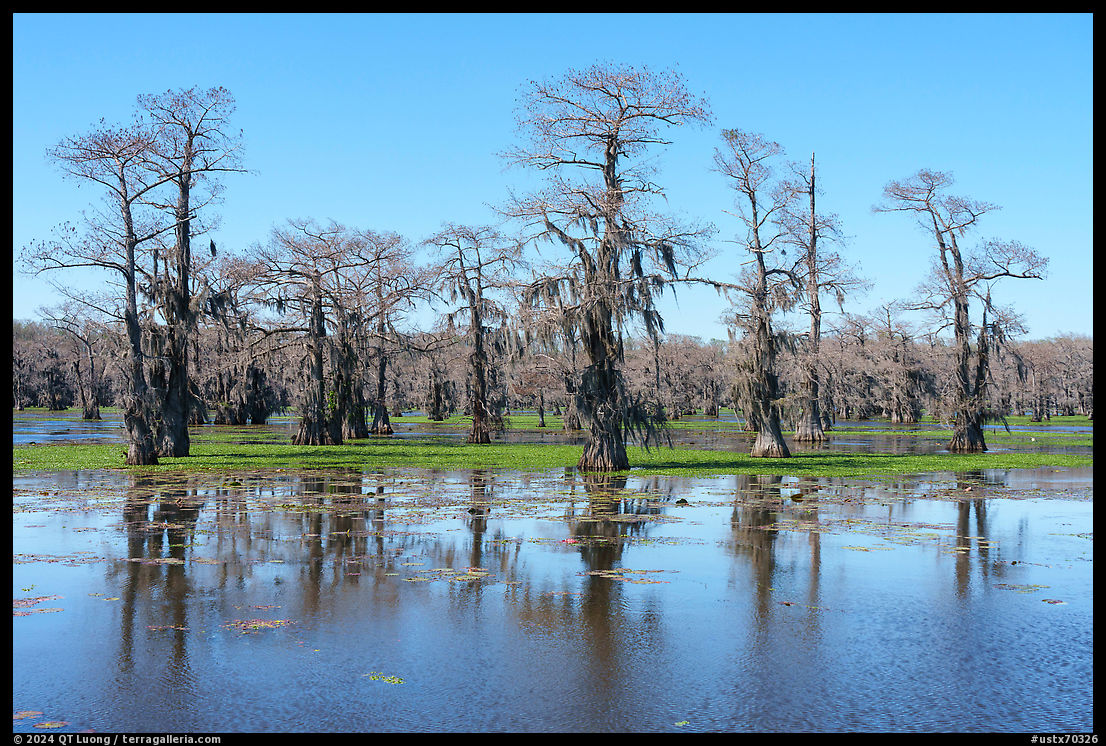
Exploring by paddle
Paddling a canoe or kayak provides a more active and intimate experience of the flooded forest. It was a fun and relaxing family activity for us, and if your goal is photography, it is a good way to find a variety of angles and viewpoints unconstrained by the limitations of the shore or of being in a group with others on a boat. It is a pretty safe activity since the water is only waist-deep. Some photographers even deploy a tall tripod next to their watercraft, but with modern cameras, handholding or resting our camera on a folded tripod in the boat is enough. Life vests were provided, but are optional for adults. The only real hazard is getting lost if you go far. There are two areas where the waterway is small and enclosed enough not to be bothered by the wake of motorboats and where rentals are available: Benton Lake and the smaller Mill Pond. For Mill Pond we rented metal canoes sitting three at the entrance station of Caddo Lake State Park. The park provided us with a key to unlock our canoes and open the boathouse where paddles and life vests are stored. I could easily use a regular camera bag in the stable and wide craft. Although I am equipped with all sorts of waterproof camera systems, I don’t plan to bring any on a future trip. Ole Mossy Rental near Benton Lake provides more choices, as they also have modern plastic kayaks of the sit-on-top type that you could transport on your car to other waterways. Those are good for solo riders and are more easy to maneuver but not as stable as canoes. You could also rent at Johnson’s Marina and Shady Glade Resort and explore the nearby areas of Caddo Lake. I have been told that during the prime autumn season, some of those rentals can be sold out.
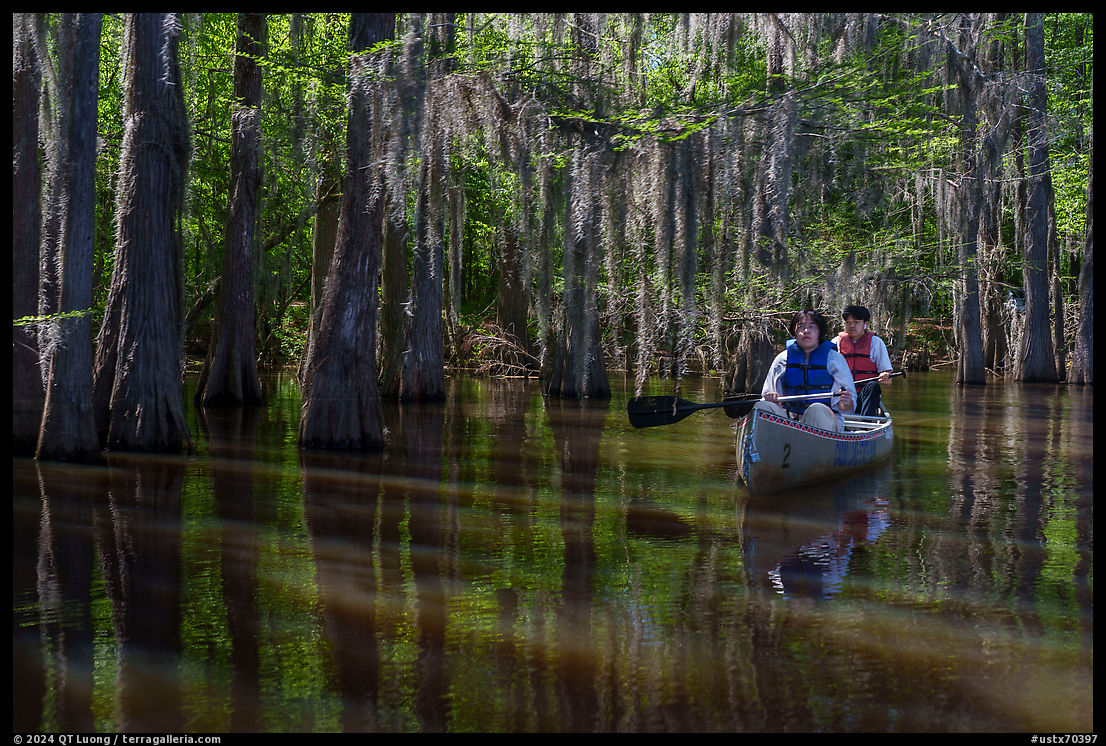
Exploring by foot
If you prefer to have your feet (and tripod) firmly planted on the ground or just to keep things simple, the best bet is Caddo Lake State Park. The boat launch provides access to a sizable channel of the bayou, and there are hiking trails, but by far the most photogenic area is Mill Pond, which you can photograph from the shore or from two piers, mainly the larger one. Although small, the area offers a lot of possibilities and can be accessed at any time of the day.

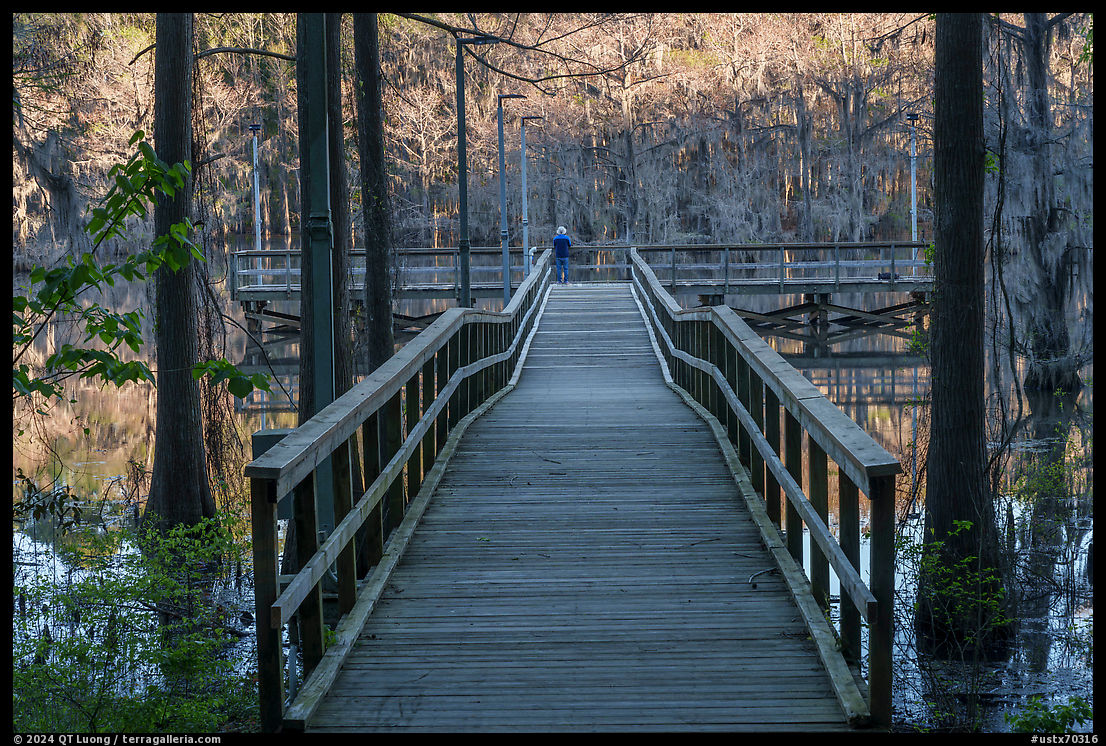
While my family recuperated from our travel from San Jose the previous day by sleeping late, I came to the pier at dawn. There was only another person there, but I imagine that in the prime months, this spot could become quite packed, and vibrations could be an issue. I was rewarded with a thin layer of mist above the water surface which was gone shortly after sunrise. I made all my compositions from the pier with a super-telephoto lens. With only a few accents of green, the scene was almost monochromatic, but for a short period after sunrise, the sun backlit the Spanish moss with a golden glow. Even when you come at the wrong time of the year, there are always photos to be found at Caddo Lake!

